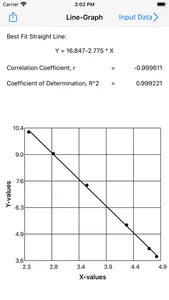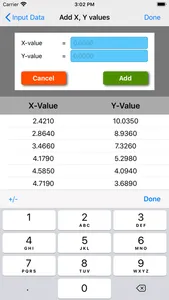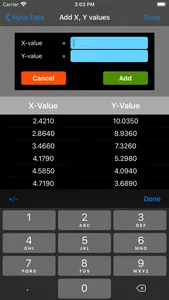The Line-Fit app uses linear regression to model the relationship between two variables (x and y) by fitting a linear equation to observed data. One variable is considered to be an explanatory (independent) variable, and the other is considered to be a response (dependent) variable.
A linear regression line has an equation of the form Y = a + bX, where X is the explanatory variable and Y is the dependent variable. The slope of the line is b, and the intercept is a (the value of y when x = 0).
To measure the association between the two variables the correlation coefficient is used, which is a value between -1 and 1 indicating the strength of the association of the observed data for the two variables.
The coefficient of determination, R2, measures how close the data are to the fitted regression line. In general, higher values of R2 indicate a better fit of the model to the given data. R2 is always positive and equal to 1.0 for a perfect fit.
A linear regression line has an equation of the form Y = a + bX, where X is the explanatory variable and Y is the dependent variable. The slope of the line is b, and the intercept is a (the value of y when x = 0).
To measure the association between the two variables the correlation coefficient is used, which is a value between -1 and 1 indicating the strength of the association of the observed data for the two variables.
The coefficient of determination, R2, measures how close the data are to the fitted regression line. In general, higher values of R2 indicate a better fit of the model to the given data. R2 is always positive and equal to 1.0 for a perfect fit.
Show More









